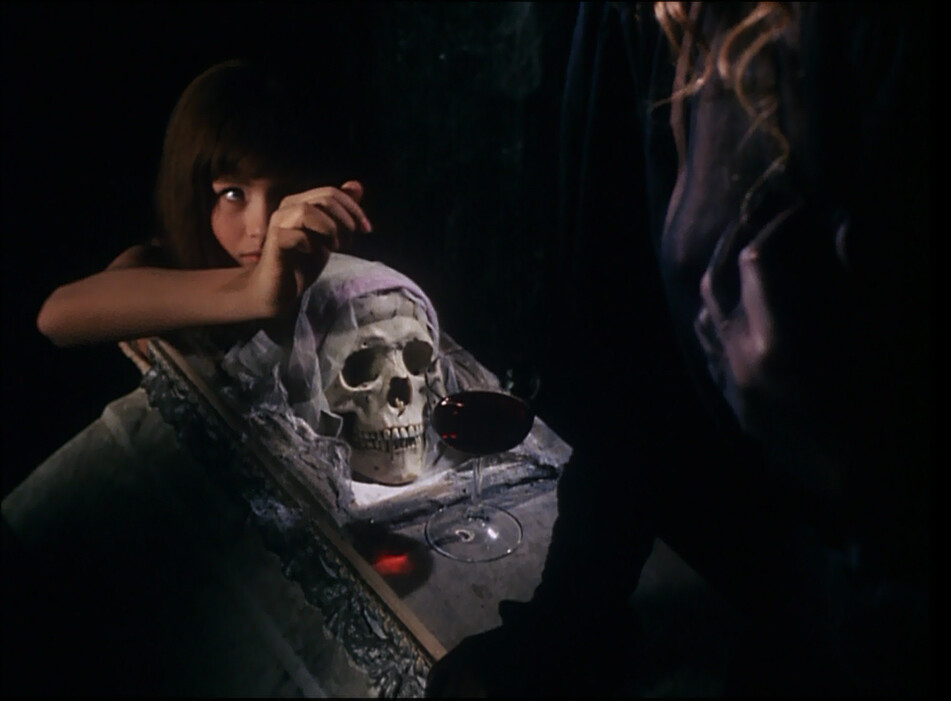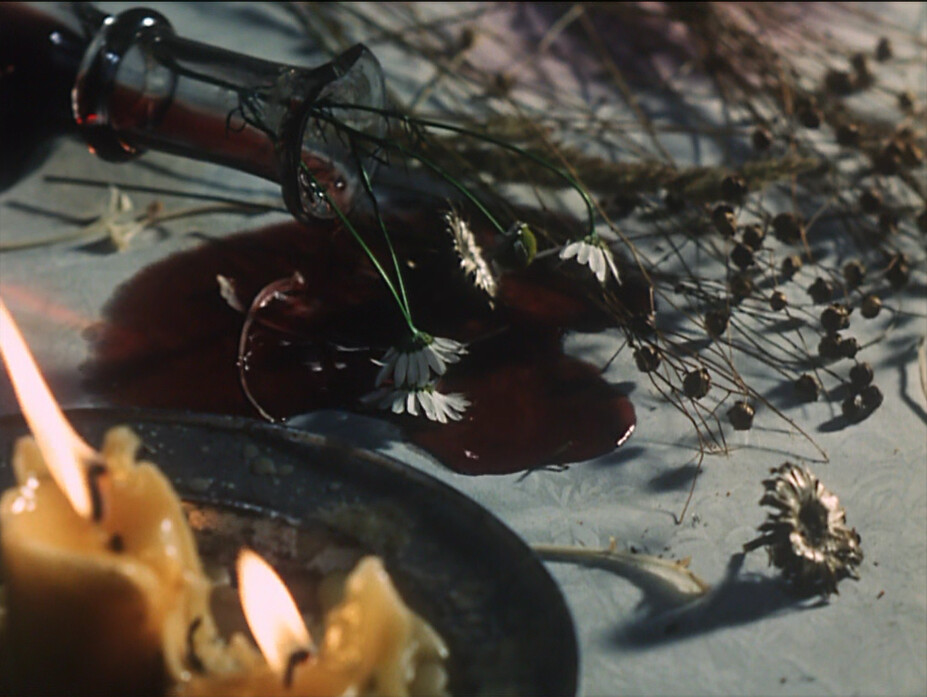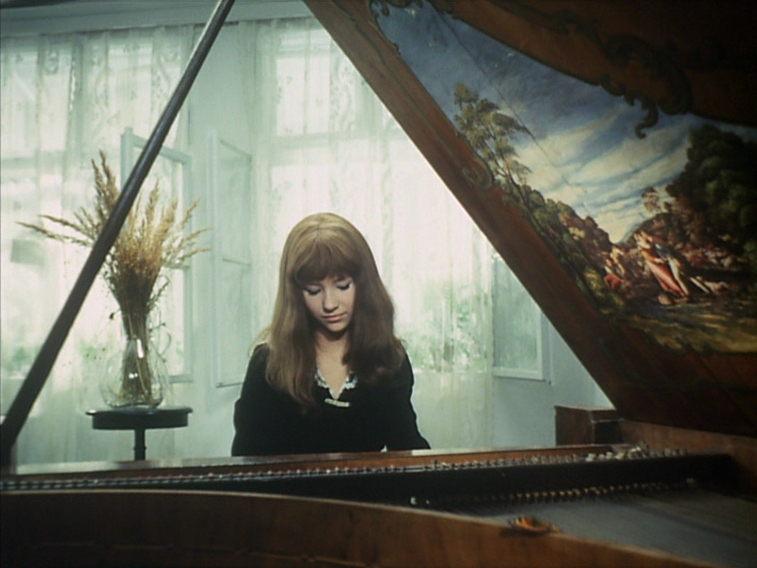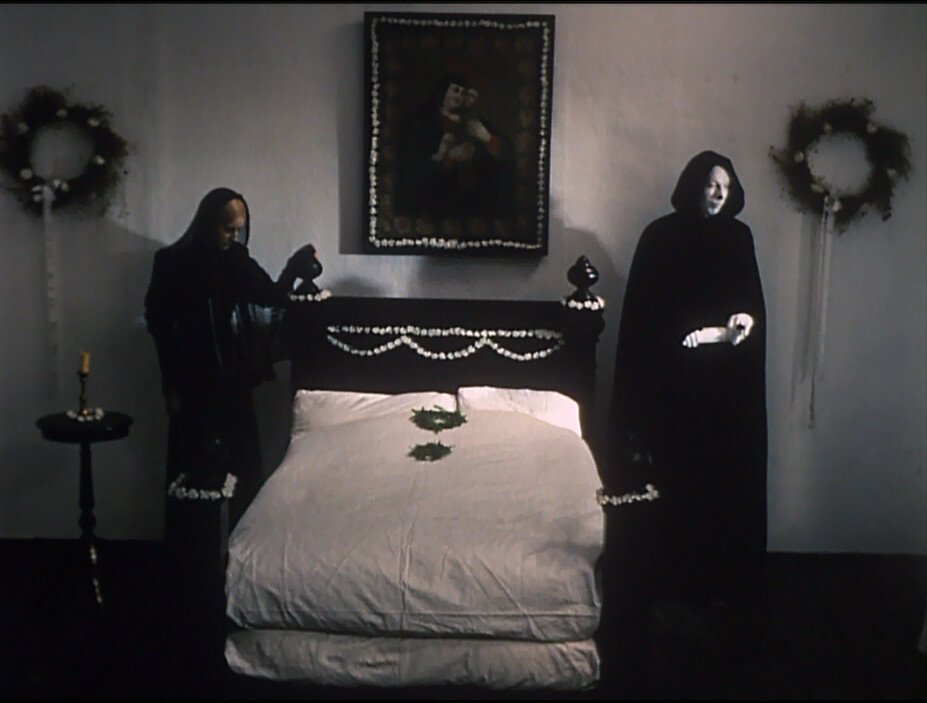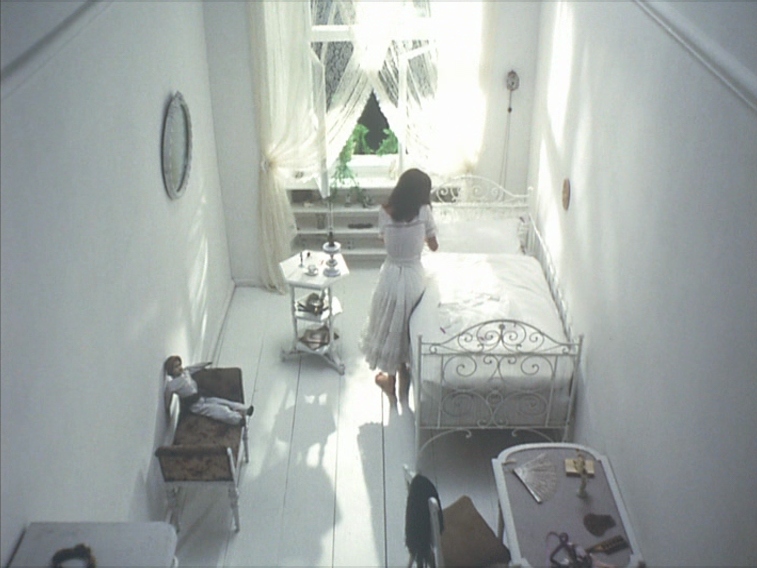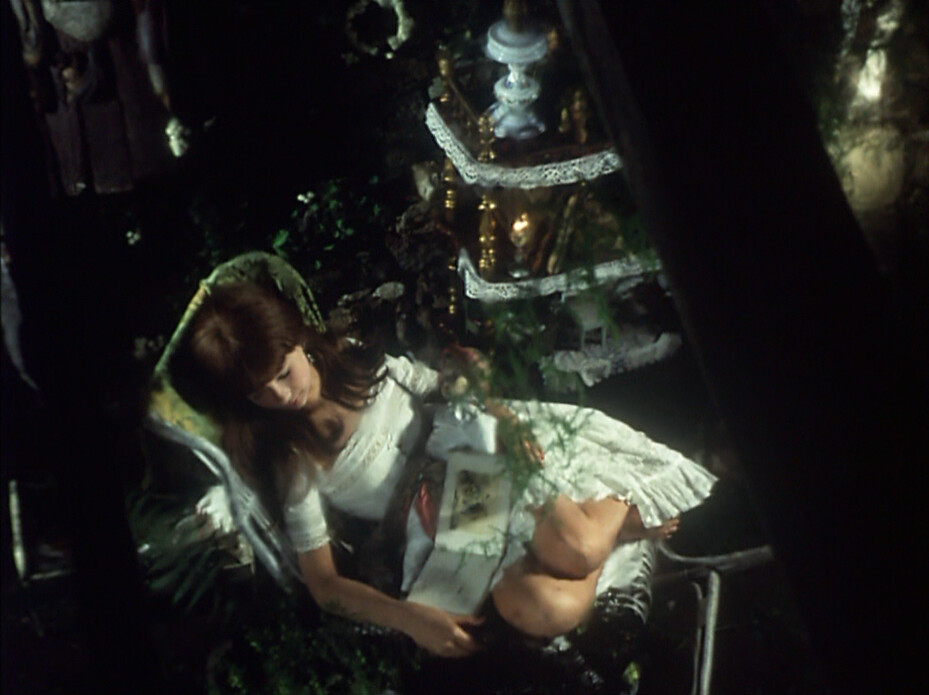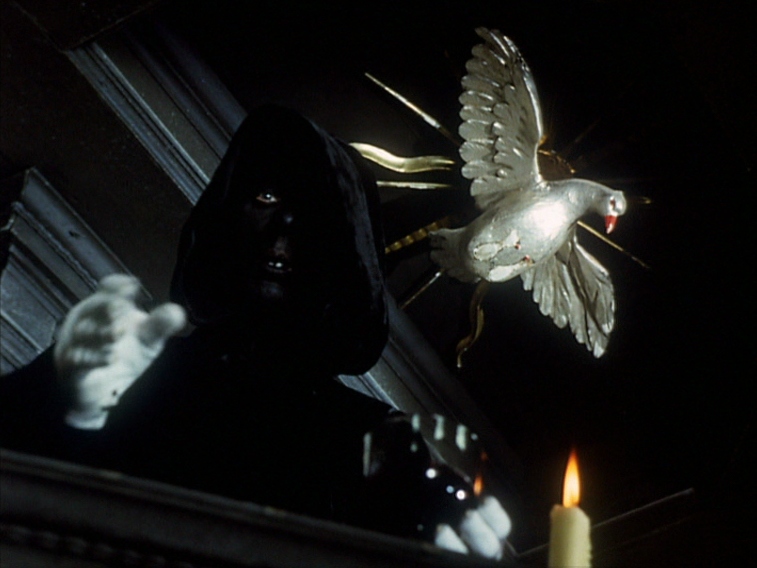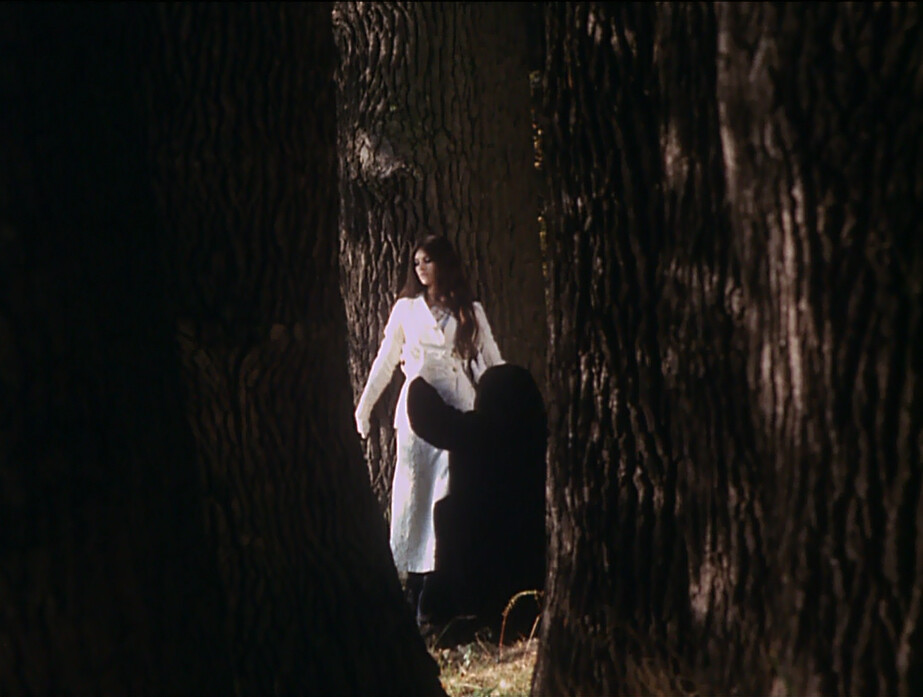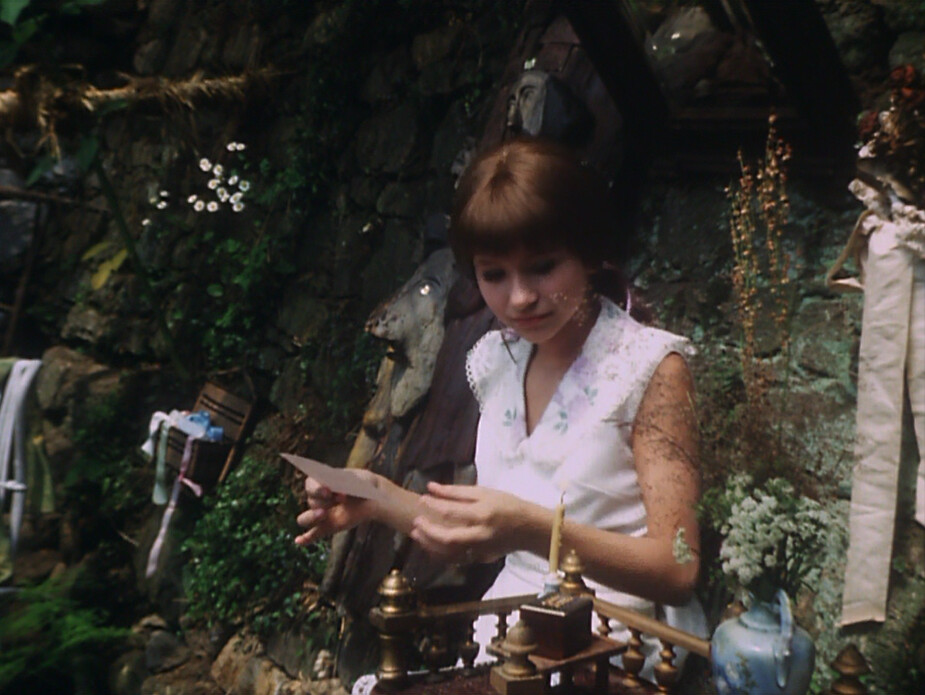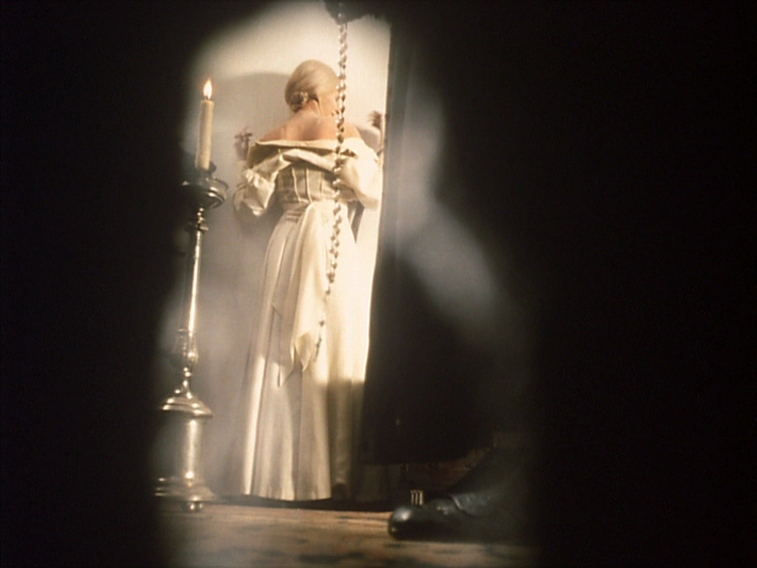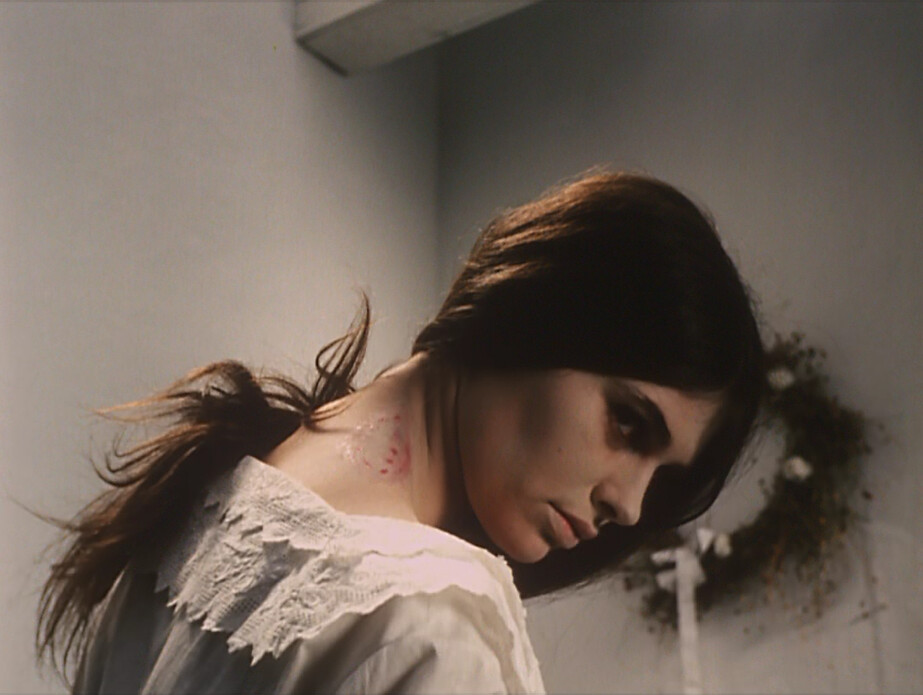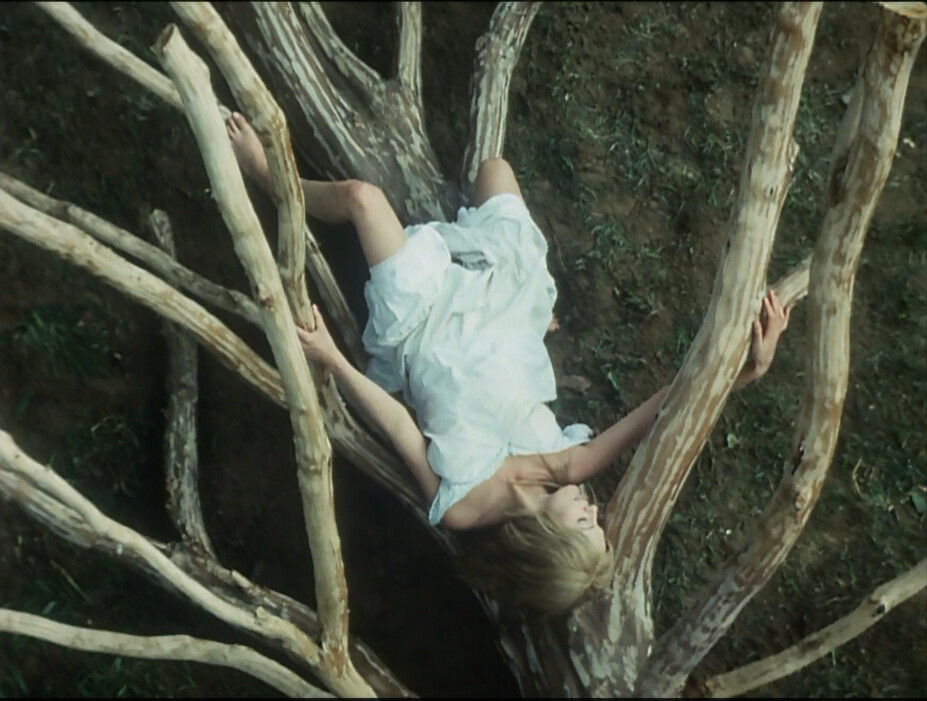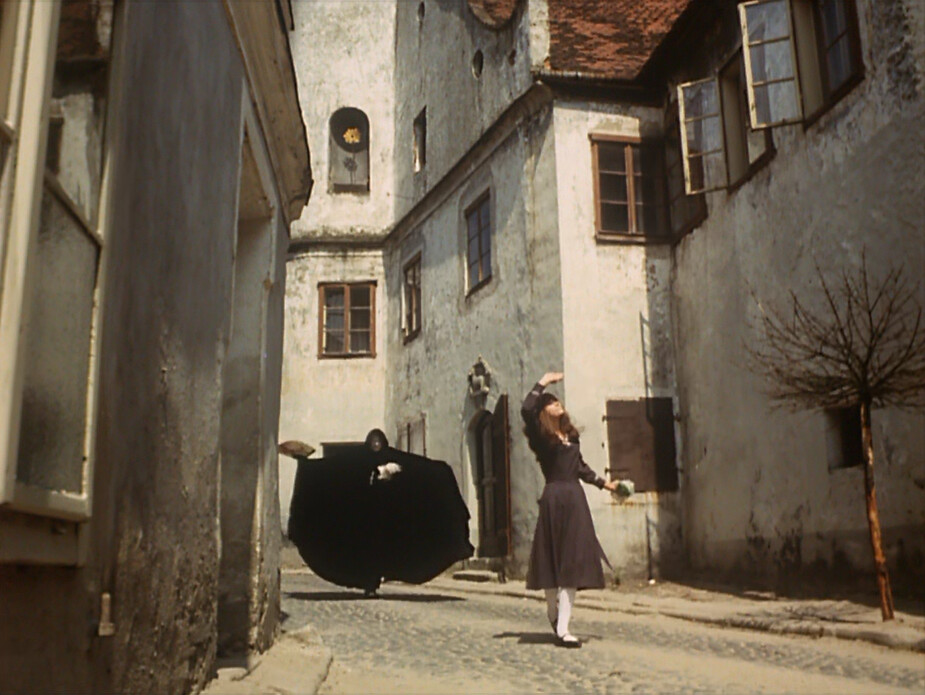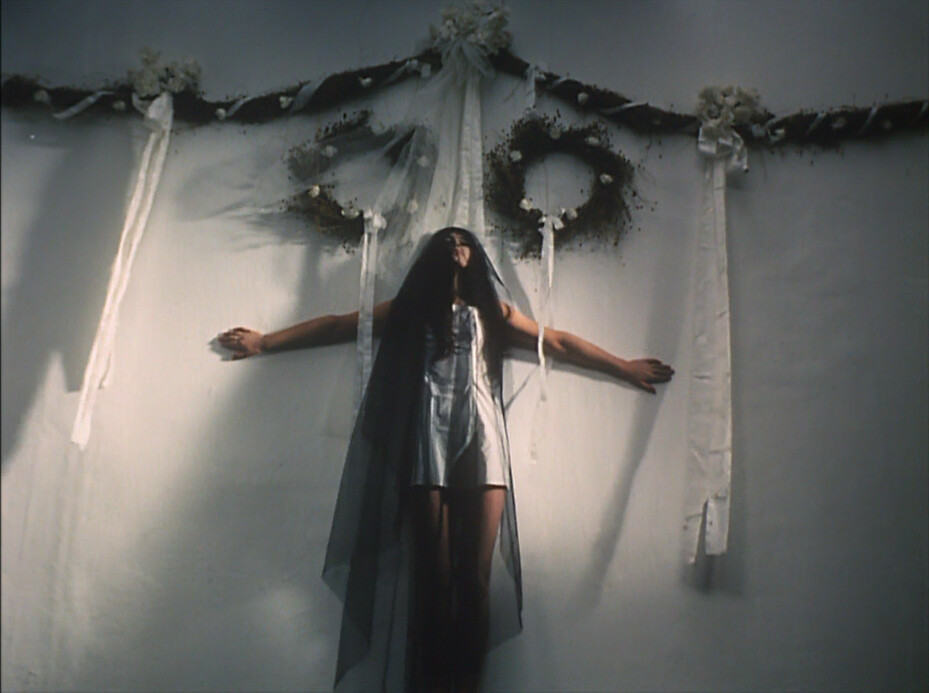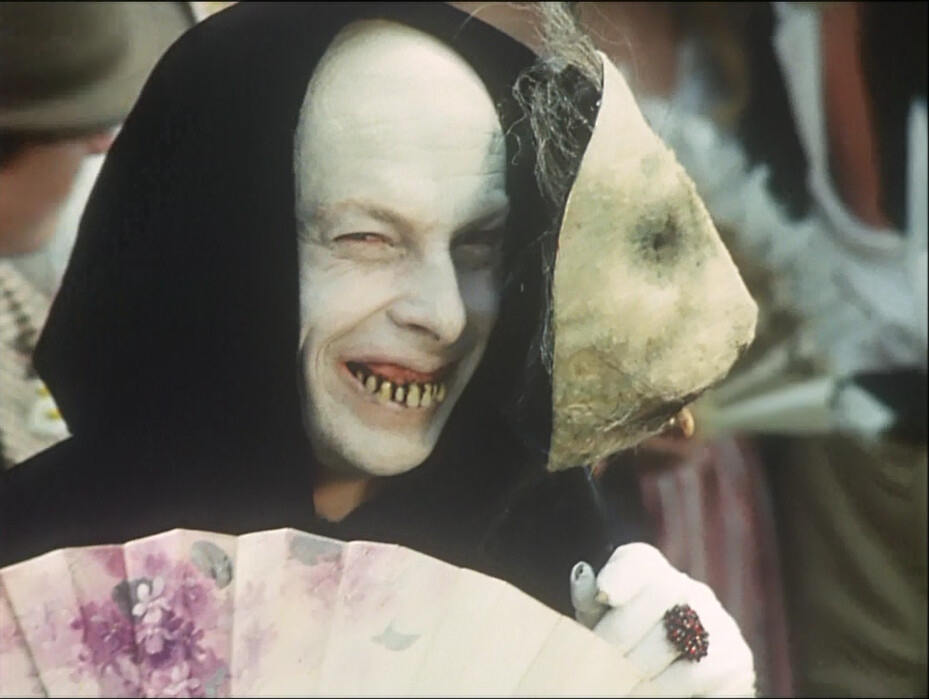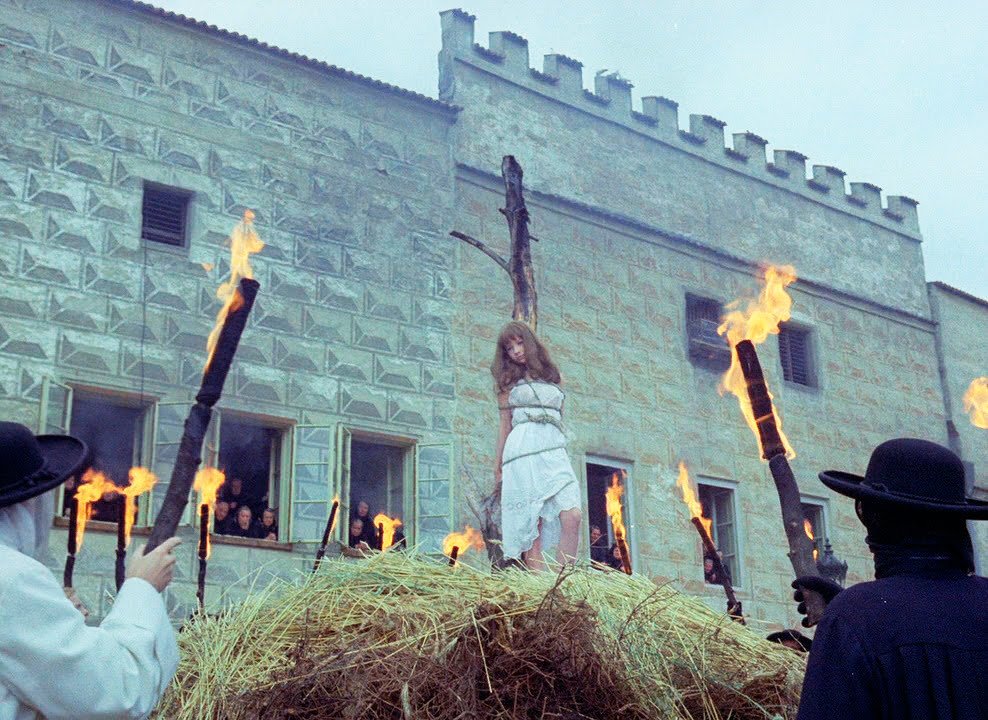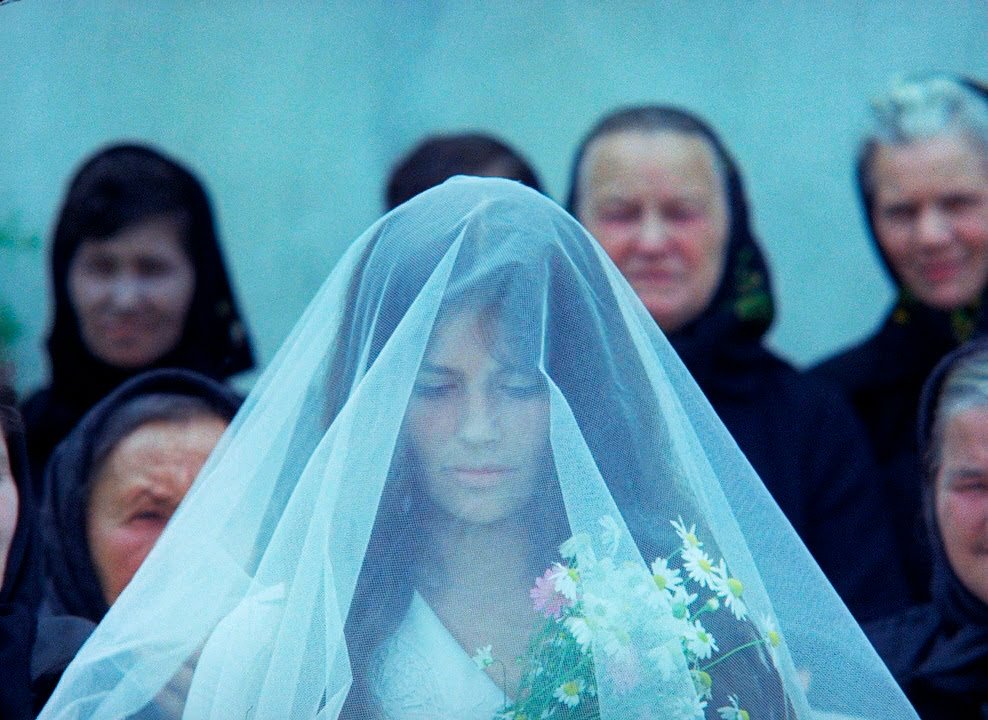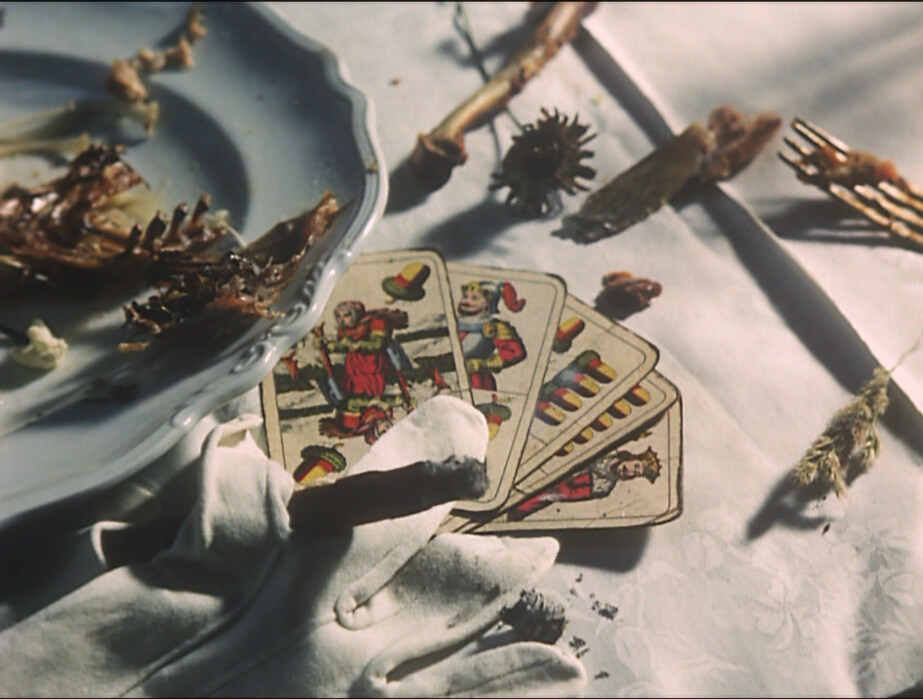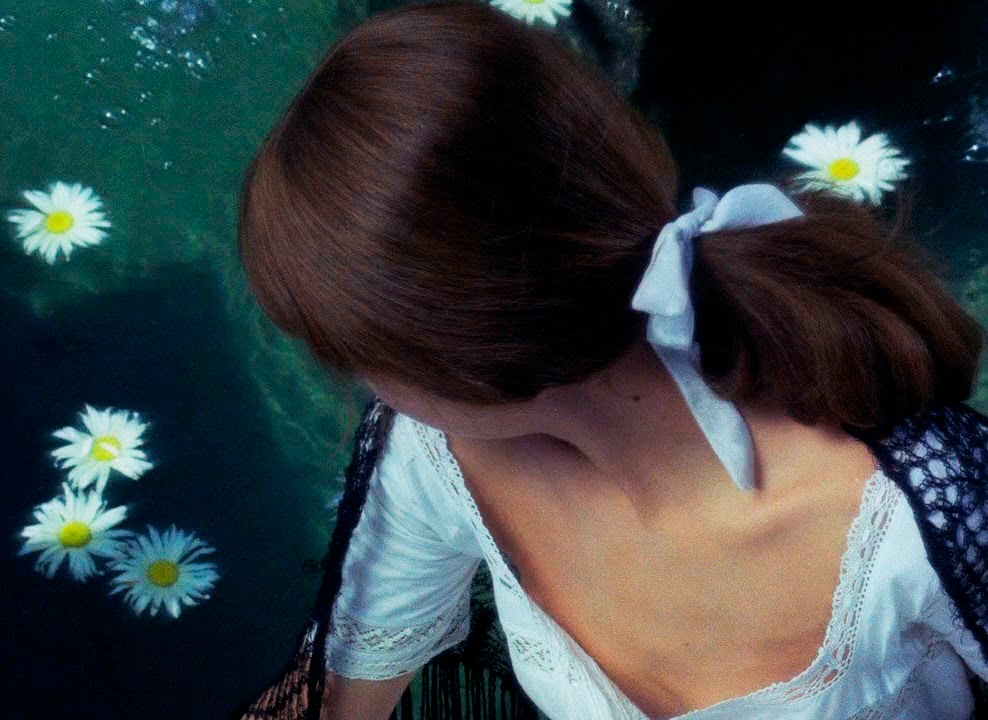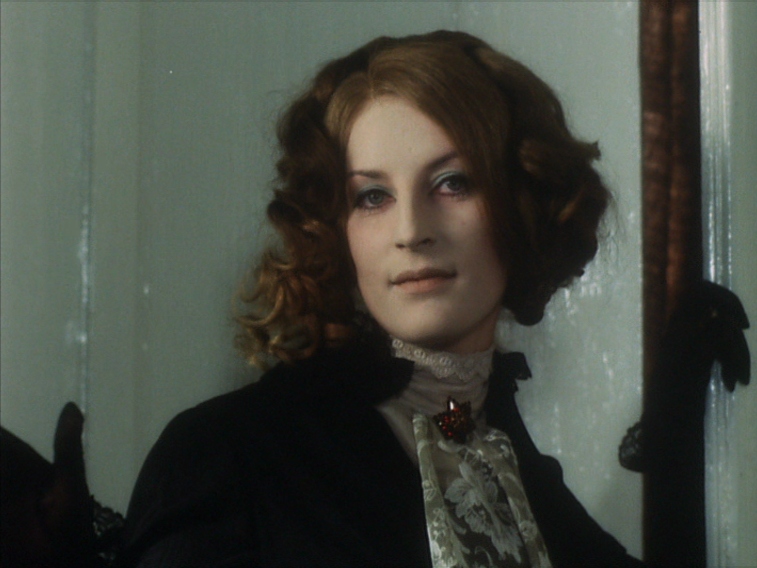
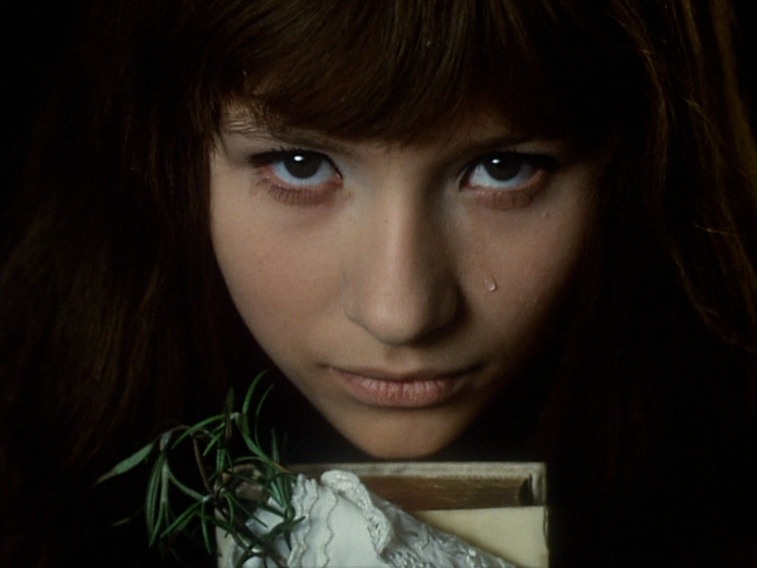
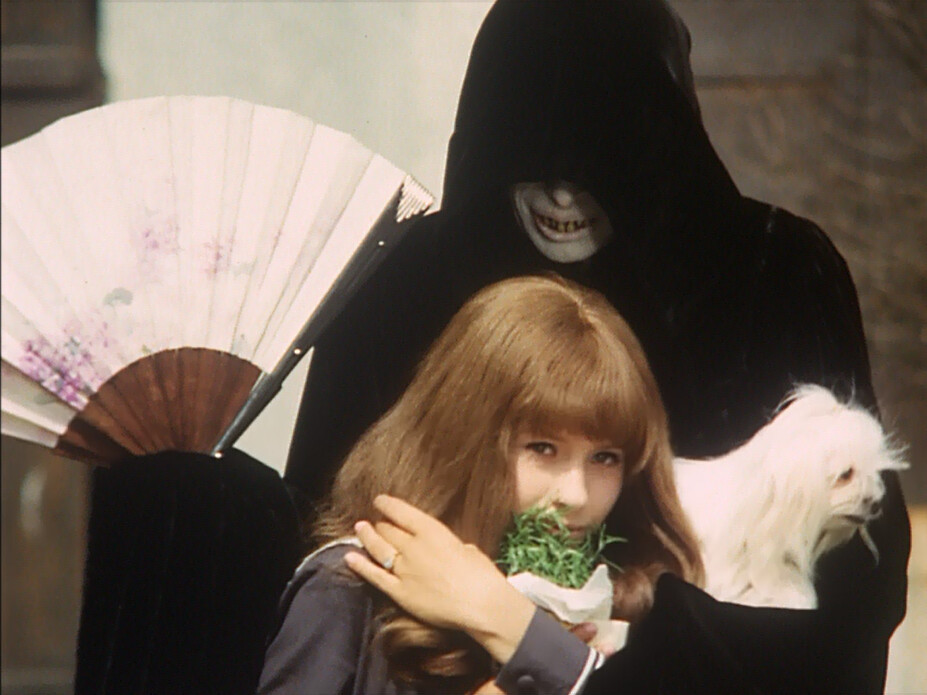
Valerie and Her Week of Wonders is one of the most enchanting movies I’ve ever seen, and remains a classic favorite many years after I first came across it. Directed by Jaromil Jireš, Valerie is a 1970 cinematic gem, and is considered part of the Czech New Wave. It has been described as a surrealist horror film, which beguiles us as much as the titular character Valerie is beguiled by the many strange beings she encounters throughout her story. Jaroslava Schallerová plays a thirteen-year-old girl, Valerie, who lives in a small bucolic village with her pious grandmother (portrayed by the haunting Helena Anýžová), and after experiencing her first menstruation is launched on a strange stream of events involving magical pearl earrings, flowers, doves, nuns, priests, incestuous lovers, and a vampiric being known as the Polecat. Whimsical, nonlinear, and charmingly illogical, it is impossible to place one’s finger on what it’s about exactly. It merely resembles a fantastical dream, where everything, every object and piece of set design, is filtered through the nostalgic splendid beauty of the era. It is replete with uncanniness and absurdity at once. A fairy tale, a lullaby-like fever dream, a transgressive narrative subverting Christianity…every scene contains a memorable and striking image which is richly symbolic and nearly iconic in itself.
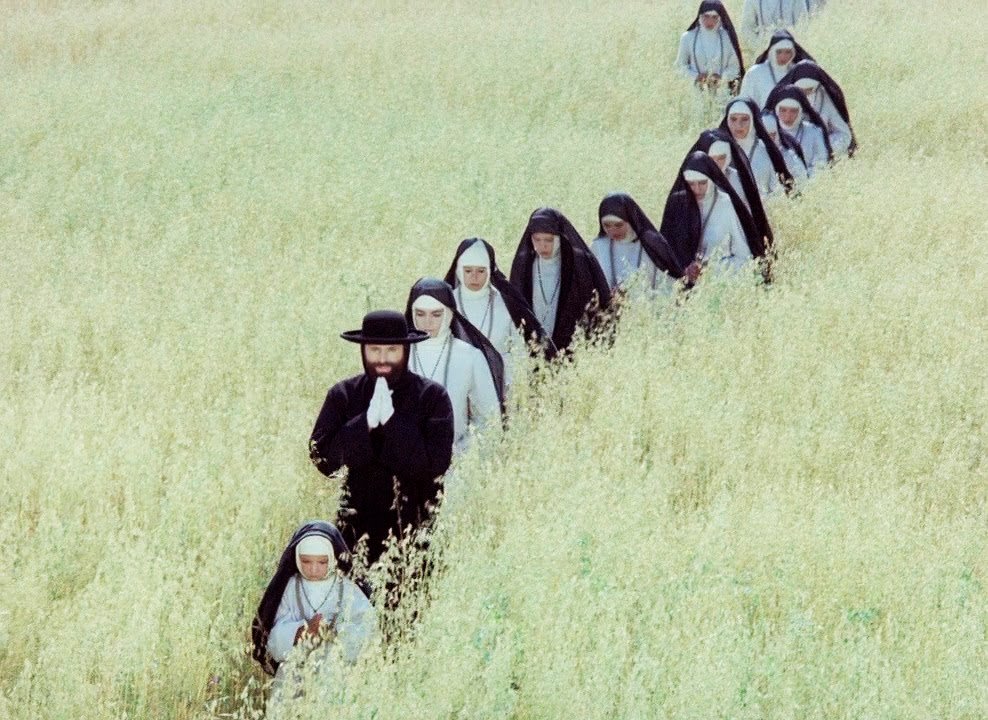
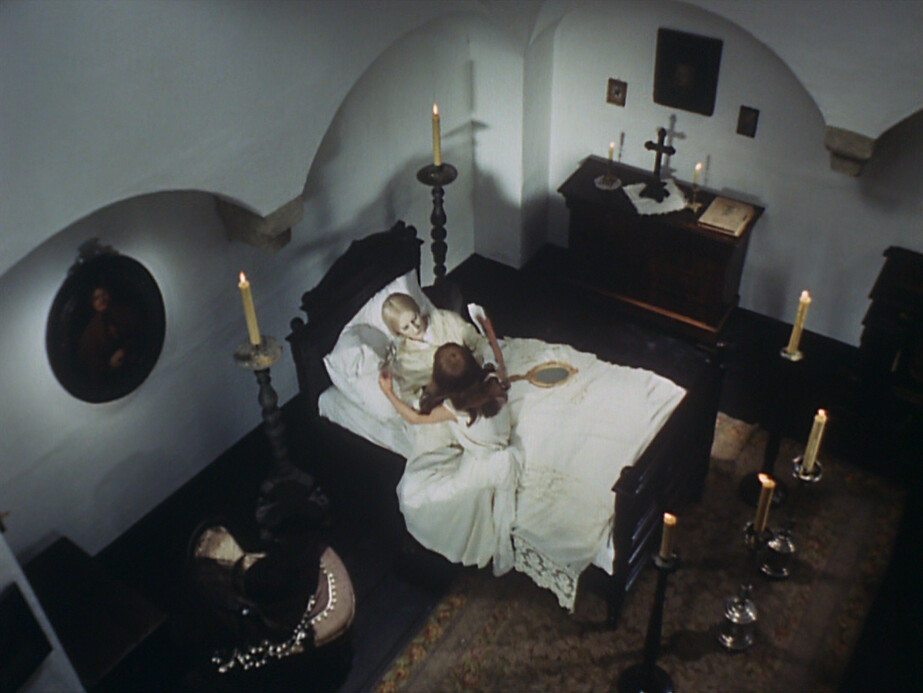
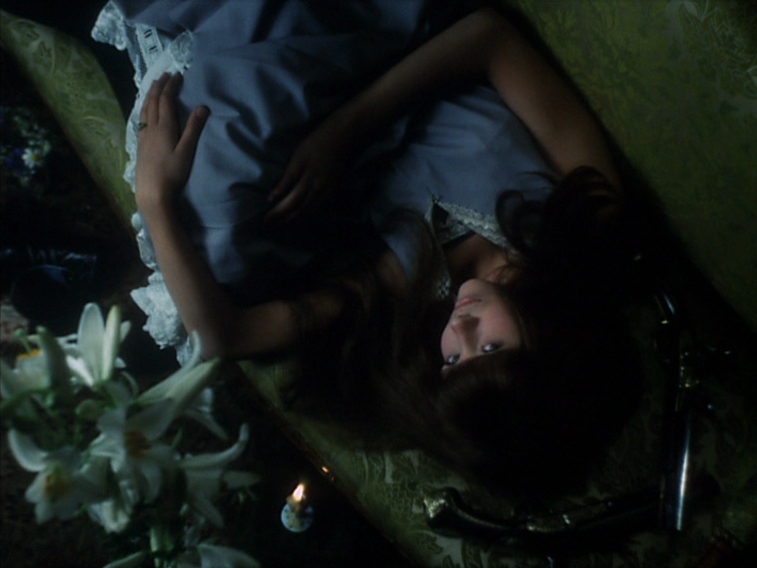
Like a murmuring, meandering brook, Week of Wonders wanders through a tale about magic, witchcraft, vampirism, mortality, religion, mysticism, symbolism of all kinds, as well as adolescence, femininity, virginity and sensuality, innocence, evil, and verging upon new thresholds. It is a lyrical, mesmerizing portrayal of sexuality and death, including the death that sexual awakening metaphorically signifies – or its emotionally complex, in some sense hateful, intrusion upon the innocence of youth. It is wildly surreal but also has a gentle and tender quality, a softness like that of Valerie herself and other characters such as Hedvika. Valerie inhabits a rustic, quasi-Victorian world, perhaps a manifestation of her mind (just as her white, narrow little bedroom is surely a symbol of her innocent girlhood), which is like a long idyll where outbursts of passion, evidences of violent emotion, are yet not out of place, and irrational, sometimes inexplicable impulses are obediently followed – a place where people are afraid neither to feast nor mourn, where tenderness and depravity walk hand in hand. What emerges from these enthralling elements, and the utterly inspired, yet unostentatious imagery, is a wonderful purity. Valerie is above all delightful, and a fascinating, aesthetically perfect icon of vintage cinema.
